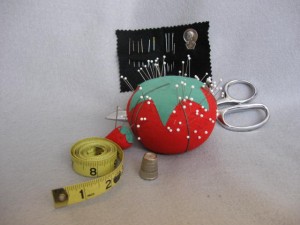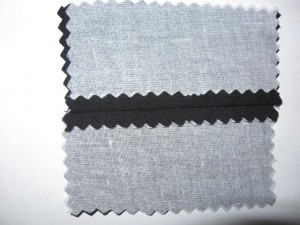Important Sewing Tools
I like sewing gadgets. I keep them in boxes and drawers all over my sewing room. If I had to decide on the most important sewing tools without listing the sewing machine itself, I would say: dressmaker scissors, an assortment of pins and a pin cushion, an assortment of hand sewing needles, a thimble, and a tape measure.
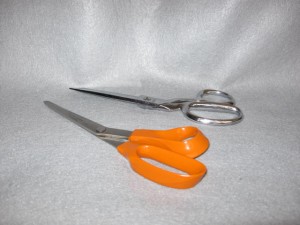 It is important that scissors are sharp and well made. I have both Gingher and Fiskars dressmaker shears. I can recommend either pair.
It is important that scissors are sharp and well made. I have both Gingher and Fiskars dressmaker shears. I can recommend either pair.
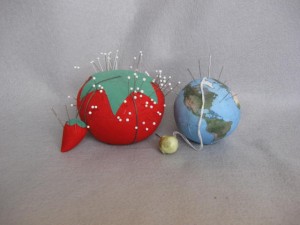 I usually use glass head silk pins, but sometimes I use silk pins with a smaller metal head. I have an over sized tomato pin cushion and now a globe pin cushion made from the free pattern offered on this website. (see patterns)
I usually use glass head silk pins, but sometimes I use silk pins with a smaller metal head. I have an over sized tomato pin cushion and now a globe pin cushion made from the free pattern offered on this website. (see patterns)
I have an assortment of hand sewing needles. Different sewing jobs need different size needles.
Not everyone uses a thimble, but I can’t get along without one.
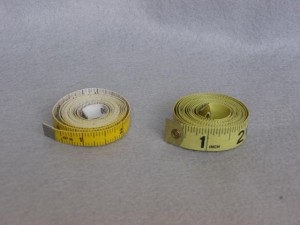 Along with my regular width tape measure I have a narrow tape measure made to use for doll making.
Along with my regular width tape measure I have a narrow tape measure made to use for doll making.
I have a few more tools that I use frequently. I have even more gadgets that I enjoy using at times. The six tools that I have named are the ones that I would list if I were playing the what to take to a desert island game for sewing tools.
